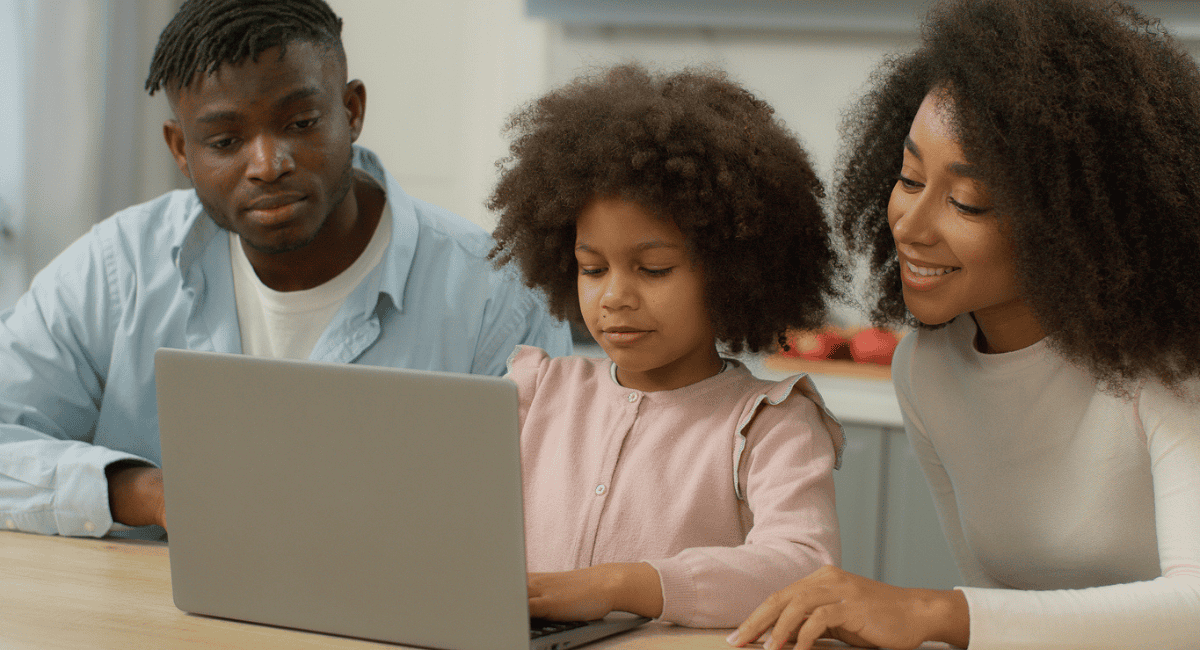From kindergarten to high school, enrollment in virtual learning continues to grow with no signs of slowing down. Data from the National Center for Education Statistics shows a large share of students have opted to enroll in full-time virtual schools, with families requesting more online learning options.
Yet online learning can be difficult for students when they’re on the other side of a computer screen. As an educator, it’s critical to think about how your students may struggle to adjust. While a virtual classroom is a new environment for many, the good news is that there are ways to make online learning as engaging, productive, and effective as any in-person education.
Read on for six ways to better support students new to online learning environments.
1. Provide Different Methods for Student Communication
Immersing students in a new online learning format comes with an adjustment period. As teachers and families adapt to new challenges and situations, students may feel uncertain or shy about voicing their thoughts and presenting themselves. At the same time, many students have unique learning styles or needs and thus require different engagement tactics. In such cases, it’s essential to diversify how and when students can communicate.
Allow students to try different things and determine what works best for them. Giving them alternative methods of communication, like writing down their answers via chat or discussing projects one-on-one, can help them feel more confident and likely to contribute. Providing communication options (and some patience) will allow new students to settle in and find their flow.
2. Model Behavior that Keeps Students Engaged
Students new to online learning may miss the in-person presence they’re used to. Even though online video conferencing isn’t the same as in-person learning, you can still offer opportunities to personalize meetings like you would face-to-face. For example, a video introduction, synchronous learning, and regular online office hours can help build the rapport that would otherwise develop in the classroom.
Additionally, it can be easier for students to “check out” and hide behind a screen in virtual settings. A key best practice to prevent this is setting expectations for behavior during virtual sessions, like turning off devices, raising hands, and using chat features. Similarly, teachers should look to maintain eye contact and use body language to help create a sense of connection with students and serve as cues to help the students then open up themselves. You may also want to explore interactive tools provided by your virtual learning platforms, such as digital whiteboards, visual brainstorming features, and collaborative documents, which can all help simulate live interactions.
By consistently modeling certain behaviors the same way you would during an in-person school day, you can create a positive and engaging learning environment for students new to online learning.
3. Build Confidence Through Small Group Interactions
Just as students may refrain from participating in large group discussions in the classroom, they may feel reluctant to participate virtually as well. When students are new to this learning environment, place them in smaller groups.
Learning research has shown that small group discussion improves academic development, relationships with peers and faculty, and psychological well-being. To facilitate small group interactions, instructors can start breakout rooms with regular online check-ins. Over time, this routine can help students implement personal checks and balances and encourage peer accountability.
There can be less structured time for students to interact or take the form of formal group projects. Through social learning, collaboration, and guidance, students can enhance their confidence and develop a meaningful understanding of the world and their classmates.
4. Demonstrate a Path to Success
Navigating a virtual learning space can be confusing for students if they don’t have guideposts for reaching success. Think about a student feeling overwhelmed about completing a quarterly project. Without visible progress markers, a big assignment can feel out of reach. Show students what success looks like, but also how they can go about building toward that success over time.
In each student’s learning journey, it’s essential to set clear milestones and celebrate the “small wins”. Honoring those incremental victories not only motivates students but also builds their confidence in pursuing loftier goals. You can praise them for their hard work, put their work on display, or reward them with extra credit points. The nature of a virtual learning environment also offers teachers the ability to be more creative in their classrooms through personalized learning plans and gamified assignments, which help students build mastery while tracking learning progress.
Celebrating small wins takes little effort, but it goes a long way toward student success. By breaking down steps into smaller increments in this way, learners can see a direction and trajectory for achieving their larger goals.
5. Allow Students to Track Their Progress
Most teachers have access to track students’ learning progress, but what about access for the students themselves? Go beyond final grade marks to help students know the specifics of where they stand as their growing in within a given course.
Consider giving students self-assessment rubrics to track their own progress. Then, share benchmarks to discuss their progress, challenges, and goals during periodic check-ins. In these meetings, teachers play a pivotal role by providing context and feedback to help students understand and improve their performance. While a good rubric allows students to think critically about the work that they’re doing, a teacher’s perspective helps close those learning gaps. As learners continue their self-evaluation journey, it also becomes essential to teach them how to set achievable goals, whether they are weekly or monthly targets for the semester or academic year.
As you guide students within a virtual setting, these conversations should support and empower them to participate in their personal success.
6. Guide Students Towards Self-Directed Learning
A study from Hanover Research emphasizes that student choice has the potential to increase academic achievement, persistence, and overall engagement. Thus to engage students and motivate them, give them ownership in their education.
Start by asking yourself, “How can they search for answers or draw conclusions on their own?” Empower your students to take charge of their learning by designing open-ended activities that inspire thoughtful conversation. Activities like argumentative essay prompts, “think, pair, share”, and peer reviews give students autonomy, accountability, and voice in their learning. Students may end up aspiring for even deeper fluency and comprehension. In this case, be ready to supply curious learners with a well of resources that goes beyond their foundational curriculum.
Even if you interact with your students frequently, much of their work will require a degree of independent study. With self-directed learning, students are more compelled to reflect and measure their progress without heavy oversight, which will be a key factor in success.
Help Students New to Online Learning Succeed
By helping students succeed early on and giving them the necessary guidance and path towards success, students new to online learning will be much more productive and engaged. Having a supportive experience with virtual learning can help new students adapt faster while creating a collaborative and high-performing environment.
At School Pathways, we understand the complexities of virtual learning and independent study and have the tools you need to create the best possibilities for each of your students. If you are interested in learning more, we’d love to have a conversation. Reach out today to see how we can help your school.





